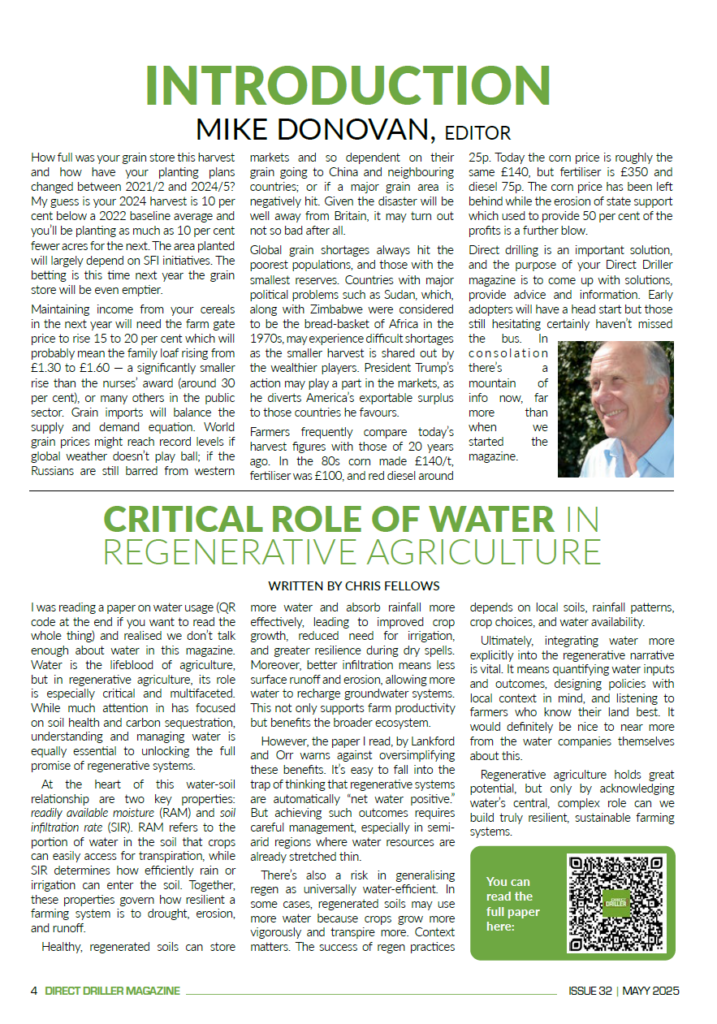Written by Chris Fellows
I was reading a paper on water usage (QR code at the end if you want to read the whole thing) and realised we don’t talk enough about water in this magazine. Water is the lifeblood of agriculture, but in regenerative agriculture, its role is especially critical and multifaceted. While much attention in has focused on soil health and carbon sequestration, understanding and managing water is equally essential to unlocking the full promise of regenerative systems.
At the heart of this water-soil relationship are two key properties: readily available moisture (RAM) and soil infiltration rate (SIR). RAM refers to the portion of water in the soil that crops can easily access for transpiration, while SIR determines how efficiently rain or irrigation can enter the soil. Together, these properties govern how resilient a farming system is to drought, erosion, and runoff.
Healthy, regenerated soils can store more water and absorb rainfall more effectively, leading to improved crop growth, reduced need for irrigation, and greater resilience during dry spells. Moreover, better infiltration means less surface runoff and erosion, allowing more water to recharge groundwater systems. This not only supports farm productivity but benefits the broader ecosystem.
However, the paper I read, by Lankford and Orr warns against oversimplifying these benefits. It’s easy to fall into the trap of thinking that regenerative systems are automatically “net water positive.” But achieving such outcomes requires careful management, especially in semi-arid regions where water resources are already stretched thin.
There’s also a risk in generalising regen as universally water-efficient. In some cases, regenerated soils may use more water because crops grow more vigorously and transpire more. Context matters. The success of regen practices depends on local soils, rainfall patterns, crop choices, and water availability.
Ultimately, integrating water more explicitly into the regenerative narrative is vital. It means quantifying water inputs and outcomes, designing policies with local context in mind, and listening to farmers who know their land best. It would definitely be nice to near more from the water companies themselves about this.
Regenerative agriculture holds great potential, but only by acknowledging water’s central, complex role can we build truly resilient, sustainable farming systems.



